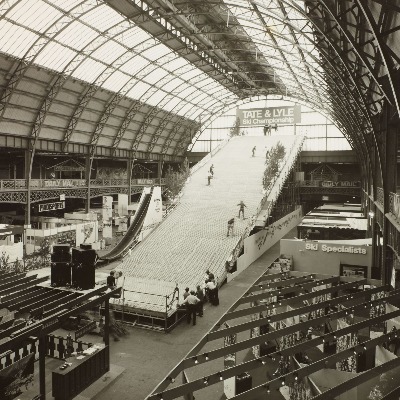South Tyrol Green Party Says State Must Promotes Cable Cars Developments With Scale, Purpose And Public Benefits

South Tyrol is the land of mountains. The best and most suitable means of transport in the mountains is undoubtedly your own legs. In addition, cable cars have also proven themselves as a means of mobility. Many parts of the country could be made accessible and connected to the outside world through non-road or non-rail connections.
Accordingly, the state government promotes cable cars in projects and documents such as the “Dolomites Low Emission Zone”.
Despite all the advantages, including from a climate protection perspective, there is resistance to new cable cars in many places. Let us therefore look at the matter in a more differentiated way.
The Rittnerbahn model – cable car as public transport: YES!
If the lift system is a form of public transport that residents with a South Tyrol Pass can use to commute to and from work or school, acceptance is usually high and sustainability is usually a given. An example of success is the Ritten cable car, which is used and appreciated by residents and guests alike.
But “public camouflage”: NO!
What has been increasingly built and promoted in recent years, and what has been criticized, are lift systems that function as feeder services for mountains, ski slopes or even as connections between several mountains and ski slopes. These do not have the aim of serving local public transport, but are a tourist infrastructure. Although they are publicly subsidized (up to 75 percent!), they are not compatible with the “SüdtirolPass” local transport subscription. Despite public funding, prices are often high. One example is the convertible train in Tiers, which received 75% public funding to the tune of 11.3 million euros. However, the prices for an ascent and descent are anything but user-friendly (22 euros for 1 ascent and descent, family ticket 44 euros).
But in order for “public lifts to deserve this name, they must be accessible to SüdtirolPass users at reasonable prices, otherwise they do not deserve this name.
Transparency and popular consent. ABSOLUTELY!
In addition, the cable car business is sometimes anything but transparent and compliant with the rules. Another example is the convertible train in Tiers. The idea is that the train should replace the previously widely used and cheap bus on the Niger Pass. If the train could be used at affordable rates with the SüdtirolPass, this could still be understood. But forcing people to use overpriced means of transport and eliminating all other public transport is neither family-friendly nor sustainable.
Another example is the basket lift to the Langkofelscharte. Only recently there were efforts to double the capacity and quadruple the cubage of the mountain and valley stations. The project has become quiet for the time being, but the discussions, arguments and fears in the valley are still very present. The problem of potentiation also applies to other lift systems: If you increase the capacity of the cable car, the adjacent parking lot and the nearby mountain huts are suddenly too small.
The list of cable car projects that have been criticized is far from over.
The basic question: Cui bono?
“Many citizens of this country are now very skeptical about cable car projects and developments. “They want climate-friendly public transport that relieves the burden on family budgets and is an alternative to the car,” said Brigitte Foppa, member of the state parliament. “Many lift facilities are publicly funded, but are not available to the public at low cost, but are in fact (expensive) feeder services for tourist areas. There is usually very little consensus among the population for this practice, something has to change here.”
Foppa is the first signatory of a resolution proposal that will be discussed in the state parliament next week and provides:
- To integrate all lift facilities that were subsidized with public money into the SüdtirolPass system (logistically and price-wise!)
- to subject new cable car projects to a climate check
- to integrate the population in the affected communities into the entire planning process for lift facilities.
- For the next 10 years, no increases in the capacity of lift facilities will be permitted, which would in turn be accompanied by an increase in the capacity of the surrounding structures (parking spaces, huts, streets, hotels, etc.).
- Designate Confinboden and Sassolungo Group as a nature park and finally protect them
Closely linked to the topic and the best example is the development of confinement soils.
For many years there has been a desire from the cable car industry to connect the Alpe di Siusi with Monte Pana above St. Christina by a cable car. The tourism industry in Castelrotto in particular expects a turbo boost and is constantly keeping up the pressure.
“This cable car connection would cut through the Confinboden and thus disrupt and partially destroy a unique area at the foot of the Sassolungo. It is a first-class drinking water protection area that supplies St. Christina with water, it is a refuge for wild animals and birds and one of the last resting areas in the heavily developed area between Val Gardena and the Alpe di Siusi.”
Many local and national organizations such as Nosc Cunfin, Lia da Mont and Lia per Natura y Usanzes, Alpine Association of South Tyrol, CAI Alto Adige, Homeland Care Association, Association of South Tyrolean Biologists, Working Group for Ornithology and Bird Protection South Tyrol, Mountain Wilderness and the Climate Action South Tyrol Alliance have been calling for this for some time the protection of this area.
There are also resolutions from the municipalities of Val Gardena that approve the protection status for this sensitive area. The prevailing opinion in Val Gardena is currently that even the local tourism industry doubts the project and that there is no majority in favor of it among the population anyway.
How carelessly the landscape around the Sassolungo group is treated is demonstrated by the recently carried out destructive earthmoving work in the Steinener town on the Sella Pass and the completely oversized cable car project to the Sassolungo saddle.
“Protecting the Sassolungo group with the Confin soils is an ecological necessity. It is also about maintaining the quality of the tourist offer in this area. Looking into the future, we have to ask ourselves what we want to offer our guests. Massive infrastructure or nature? It is time to recognize the value of the still untouched areas and protect them from massive interventions. For the environment, for our economy and for future generations,” adds the Green candidate for the state elections Elide Mussner.
Therefore, now is the time to aim for a protected status for the Sassolungo Group and to involve the population in the decision-making process. The state parliament can set the course for this in its last session of this legislative period.














